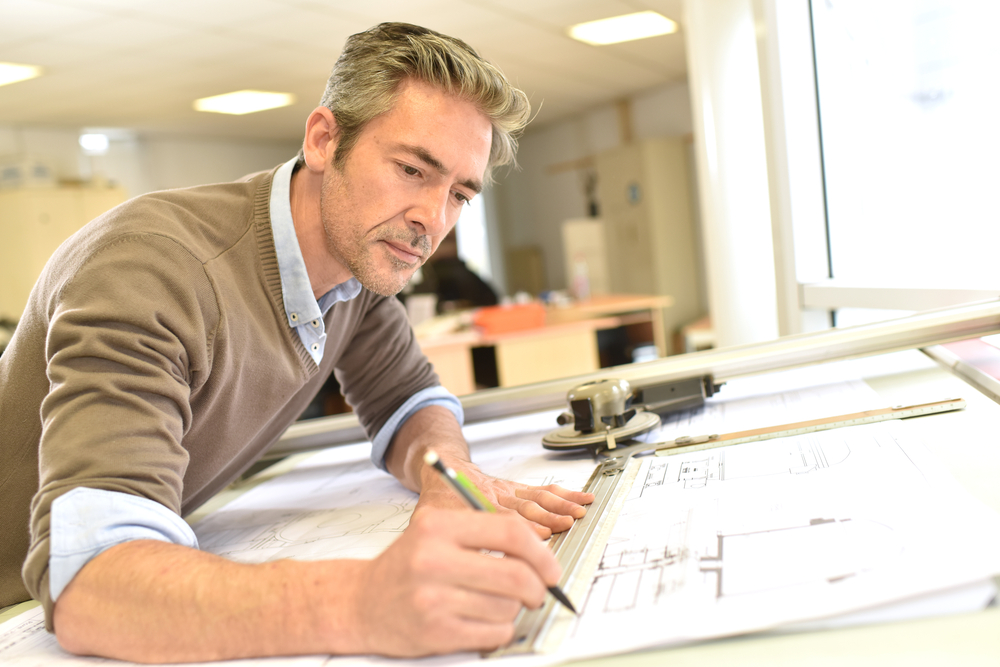Comprehending the Diverse Occupation Paths Available for Aspiring Architect
As an aspiring Architect, you have a world of occupation courses waiting for you. Whether you're attracted to traditional architecture or the nuances of lasting layout, there's a specific niche that lines up with your rate of interests.
Conventional Design: Designing Buildings and Structures
Standard architecture concentrates on making buildings and frameworks that mix capability with visual appeal. As you explore this field, you'll appreciate the elaborate balance in between kind and objective. You'll find out to attract ideas from historic designs, including components like balance, products, and craftsmanship. Your designs can reflect social heritage, showcasing local traditions while meeting contemporary needs.
You'll develop abilities in preparing, model-making, and site analysis, allowing you to envision and interact your ideas efficiently. Engaging with customers, you'll require to recognize their vision and convert it right into practical designs.
Furthermore, constructing codes and sustainability practices are vital in your work, guaranteeing your structures are risk-free and ecologically friendly. As you expand in your profession, you'll locate chances in domestic, business, and even remediation tasks, each offering special challenges. Embracing traditional architecture leads the way for a satisfying occupation that admires the past while shaping the future.
Urban Preparation: Shaping Neighborhoods and Public Spaces
As an aspiring Architect, you can play a crucial function as a city planner, changing just how areas operate and communicate. By using community interaction approaches, you'll guarantee that citizens have a voice in shaping their environment. And also, incorporating sustainable layout concepts will assist produce rooms that not only meet today's requirements however additionally safeguard the future.
Function of Urban Planners
While several could consider engineers as the single enthusiasts behind structures, city coordinators play an essential role fit the wider landscape of areas and public rooms. They analyze land use, zoning laws, and community needs to produce sustainable atmospheres that improve lifestyle. By working together with different stakeholders, you'll help make parks, transportation systems, and household locations that advertise social interaction and access. Urban planners also concentrate on ecological factors to consider, making certain that growths incorporate eco-friendly areas and support biodiversity. Your proficiency in spatial design and area characteristics enables you to envision future growth while preserving social heritage. In this critical duty, you'll straight affect how individuals experience their environments, making every job a possibility for favorable adjustment.
Neighborhood Involvement Techniques
Effective community engagement strategies are vital for city planners to guarantee that the voices of homeowners are listened to and valued in the planning process. To foster significant discussion, you must focus on open forums and workshops where area members can express their concepts and worries. By actively listening and including responses, you'll develop areas that reflect the area's demands, inevitably leading to more successful and lasting metropolitan environments.
Sustainable Design Concepts
When developing metropolitan rooms, incorporating sustainable style concepts is essential for producing settings that thrive both ecologically and socially. Think about integrating green rooms, like gardens and parks, to boost biodiversity and improve air high quality.
Designing with water preservation in mind is additionally key-- think of rainfall gardens and permeable surfaces to manage stormwater. Including area participants throughout the preparation procedure guarantees that the areas you produce satisfy their requirements and motivate social communication. By welcoming these concepts, you'll add to lively, sustainable city landscapes that profit every person.

Landscape Design: Producing Sustainable Exterior Settings
As you discover landscape style, you'll find vital design concepts that produce functional and beautiful exterior areas. Sustainable techniques play a crucial role in guaranteeing these atmospheres thrive while minimizing ecological impact. And also, you'll discover a variety of occupation opportunities that permit you to make a genuine distinction in exactly how individuals engage with nature.
Design Principles in Landscape
Comprehending layout principles in landscape design is crucial for developing lasting outdoor atmospheres that harmonize with nature. You'll need to ponder aspects like range, proportion, and balance to ensure your layouts feel cohesive and welcoming. Including native plants not just boosts biodiversity but likewise minimizes water use, making your landscape resistant. Think about the circulation of space and just how people engage with it; paths and seating locations ought to invite expedition and leisure. In addition, take note of seasonal changes, creating with products that enhance the environments year-round (Architect). By prioritizing sustainability and aesthetics, you can create outside areas that enhance the neighborhood and advertise health. Accepting these principles will establish a solid foundation for your occupation in landscape design.
Lasting Practices Overview
Lasting methods in landscape architecture not just concentrate on visual appeals but additionally prioritize ecological wellness and source conservation. By incorporating native plants, you enhance biodiversity and minimize the requirement for chemical fertilizers and chemicals. Carrying out efficient watering systems assists conserve water and lessens runoff, shielding close-by ecosystems. You can make areas that advertise soil wellness, such as using natural materials and exercising permaculture principles. Furthermore, integrating environment-friendly framework, like rain yards and porous sidewalks, help in stormwater monitoring and minimizes urban warm. You contribute to a healthier world and provide areas that promote area connection when you develop outside settings with sustainability in mind. Eventually, these techniques assure your styles profit both individuals and the setting for many years to find.
Profession Opportunities Exploration
With a strong foundation in sustainable practices, landscape architecture offers a selection of job paths that enable you to make a significant effect on the setting. You might function as a landscape designer, creating cosmetically pleasing and useful outside areas, or focus on ecological restoration, aiding to revitalize damaged environments. Urban coordinators typically work together with landscape architects to develop environment-friendly areas in metropolitan setups, improving city livability. If you're enthusiastic regarding education, think about becoming a landscape architecture instructor, inspiring future generations. Additionally, you may work with nonprofits focused on ecological sustainability or take part in study to innovate brand-new techniques. Each path not just shapes gorgeous settings however also cultivates a healthier world for future generations.
Lasting Layout: Concentrating On Eco-Friendly Practices
As you explore your occupation in style, embracing environment-friendly techniques can set you apart in an affordable area. Sustainable style concentrates on developing structures that minimize environmental impact while enhancing resident wellness. By including eco-friendly products, energy-efficient systems, and lasting structure methods, you'll add to a greener future.
Begin by getting expertise of environment-friendly certifications like LEED or BREEAM, which can strengthen your qualifications. Take into consideration just how all-natural light, ventilation, and thermal efficiency can enhance design. Collaborate with engineers and ecological consultants to innovate solutions that lower waste and preserve sources.
Don't forget the significance of community involvement-- interesting regional stakeholders can influence styles that harmonize with the setting. As customers increasingly prioritize sustainability, your know-how in green techniques will not just draw in jobs yet also accomplish your passion for responsible architecture. Embrace this important aspect of the occupation, and watch your career grow.
Historic Conservation: Safeguarding and Restoring Social Heritage
While you begin on your building journey, take into consideration the necessary duty of historic conservation in maintaining our social heritage. This field concentrates on the defense and remediation of substantial buildings, sites, and structures that tell the tales of our past. By engaging in historical conservation, you'll assist protect the building heritage that shapes neighborhood identification.
As a historic preservation Architect, you'll examine historical importance and evaluate the condition of structures. You'll work closely with guardians and chroniclers to assure genuine repair methods are utilized. This profession path allows you to mix creative thinking with study, allowing you to create options that appreciate original products and workmanship.
Your work not only adds to sustainability by recycling existing structures however likewise fosters a feeling of satisfaction within areas. Accepting this path will certainly assist you end up being a guardian of background, maintaining the tales and appearances that improve our lives.
Interior Architecture: Enhancing Indoor Spaces
Historic conservation and interior style both share a dedication to enhancing the constructed setting, however they focus on various aspects. While historical preservation emphasizes keeping a structure's social and historical worth, interior style zeroes in on maximizing indoor rooms for capability and aesthetics.
As a hopeful Architect, you'll discover that interior style permits you to blend imagination with technical abilities. You'll design areas that not just look good however additionally promote convenience and efficiency. This field includes comprehending just how light, color, and products interact within an area, influencing mood and functionality.
You'll work with different jobs, from residential homes to commercial workplaces, making sure that each setting meets the requirements of its passengers. By prioritizing individual experience, you can change insides right into inspiring and functional spaces, making a substantial influence on how people connect with their environments. Embrace the opportunity to improve interior settings and form the means individuals live and work.
Industrial Design: Merging Capability With Aesthetic Appeals
Commercial style plays an essential role in producing items that flawlessly mix appearances with functionality, ensuring that more info what you utilize everyday is not only visually enticing yet likewise functional. As an ambitious Architect, you might immerse yourself in this area, concentrating on making every little thing from furnishings to consumer electronics. Your job involves recognizing individual needs, products, and making processes, allowing you to create cutting-edge options that improve everyday experiences.
In industrial design, you'll usually collaborate with marketing experts, designers, and producers, guaranteeing that your designs are not read more only stunning however additionally viable. This job course supplies a vibrant atmosphere where creative thinking satisfies functionality, making it a satisfying option for architects interested in shaping the products of tomorrow.
Regularly Asked Inquiries
What Educational Certifications Do I Required to Come To Be an Engineer?
To end up being an architect, you'll need a specialist level in style, typically a Bachelor's or Master's. In addition, you'll need to complete a teaching fellowship and pass the Architect Enrollment Examination to exercise lawfully.
Are There Qualification Demands for Different Architectural Career Paths?
Yes, there're qualification requirements for numerous architectural courses. Architect. You'll need to pass examinations, full teaching fellowships, and occasionally go after specialized training, depending on your picked focus, like landscape style, urban layout, or historic preservation
What Software Program Skills Are Essential for Designers Today?

Exactly How Can I Gain Practical Experience While Studying Design?
You can obtain practical experience by interning at architectural firms, taking part in style competitors, offering for area tasks, or collaborating with classmates on real-world projects. These opportunities enhance your skills and develop useful links in the market.
What Job Opportunities Exist Outside Conventional Design Firms?
You can check out different work chances outside typical style companies, like metropolitan planning, interior design, landscape style, building and construction monitoring, actual estate growth, or also functions in sustainability consulting. Each offers special obstacles and benefits.
Whether you're drawn to conventional architecture or the subtleties of lasting layout, there's a niche that straightens with your passions.When creating metropolitan spaces, including sustainable check here layout concepts is vital for producing environments that grow both environmentally and socially.As you discover landscape design, you'll discover essential layout principles that develop practical and gorgeous exterior areas.Understanding layout principles in landscape design is crucial for developing lasting outdoor settings that harmonize with nature.In commercial style, you'll often work together with manufacturers, engineers, and marketing experts, guaranteeing that your designs are not just beautiful but likewise viable.
Comments on “Architect Advice on Utilizing Small Urban Spaces”